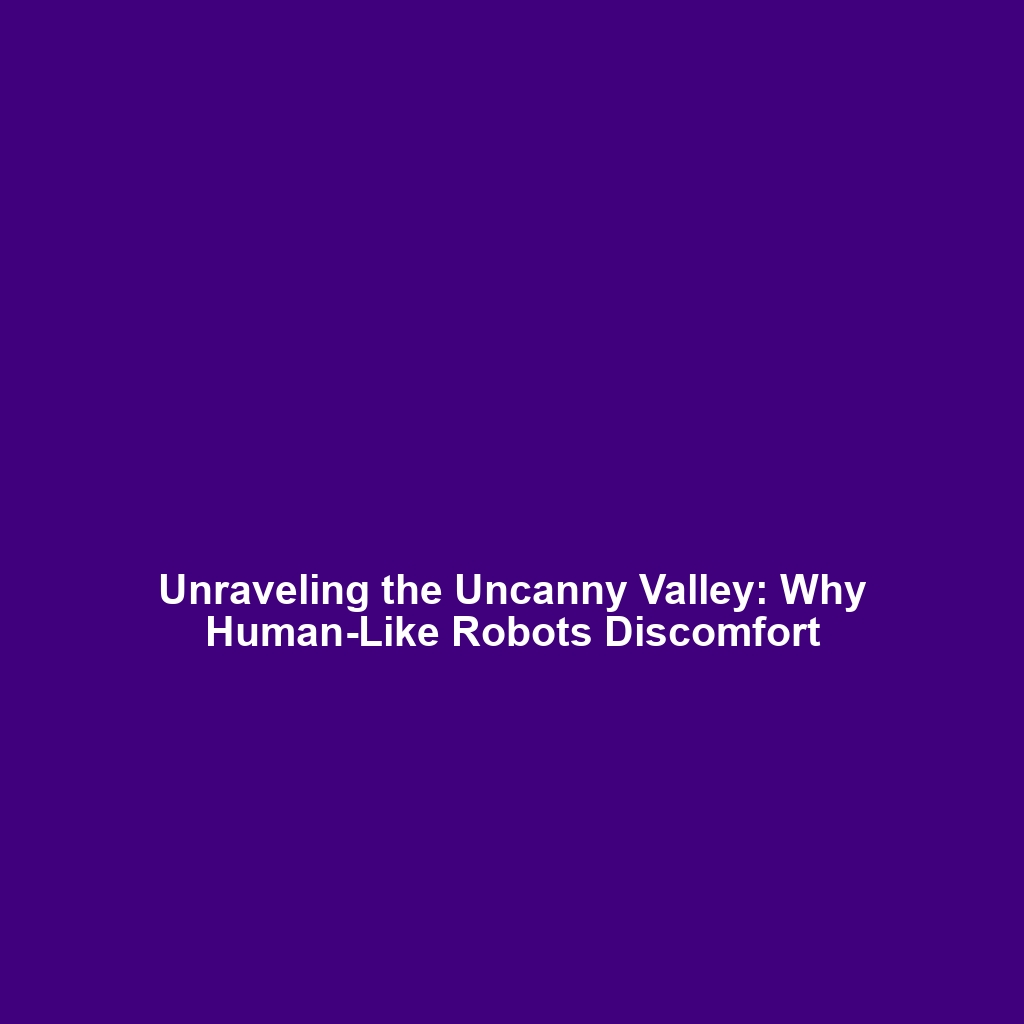The Uncanny Valley Phenomenon: Why Robots That Look Too Human May Evoke Discomfort
The uncanny valley phenomenon is a critical concept in the realm of humanoid robots, describing the discomfort humans experience when encountering robots that closely resemble humans but still possess slight imperfections. Understanding this phenomenon is vital for advancing robotics, enhancing user acceptance, and ensuring effective human-robot interactions. In this article, we will delve into the significance of the uncanny valley within the context of humanoid robotics, explore key concepts, applications, challenges, and future research directions.
Key Concepts of the Uncanny Valley
The uncanny valley, a term popularized by Japanese roboticist Masahiro Mori in 1970, refers to the dip in emotional response that occurs when a robot’s appearance is almost human-like but still fails to meet human likeness. This phenomenon can evoke feelings of eeriness or discomfort. Key concepts associated with the uncanny valley include:
- Human-likeness: The closer a robot’s appearance to that of a human, the greater the emotional response it elicits.
- Emotional Reactions: Humans often exhibit stronger emotions towards humanoid robots than non-human robots, leading to potential discomfort.
- Familiarity vs. Alienation: Highly realistic robots may trigger both attraction and aversion, causing mixed feelings in human observers.
Applications and Real-World Uses
The uncanny valley phenomenon has significant implications for the design and functionality of humanoid robots. Understanding how this concept is used in various applications can help mitigate discomfort and enhance user experience. Some practical uses include:
- Healthcare Robots: Robots assisting in patient care, where human likeness can foster trust but may also produce discomfort if they appear too human.
- Companion Robots: Assistive devices designed for companionship, such as those for elderly care, need to balance human-like features while avoiding the uncanny valley.
- Entertainment Robots: In the film and gaming industries, creators utilize humanoid robots to evoke empathy or fear, influenced by the uncanny valley effect.
Current Challenges
Despite advancements in robotics, several challenges remain regarding the uncanny valley phenomenon:
- Design Limitations: Achieving the right balance in human likeness is difficult, with many robots being too realistic or not realistic enough.
- User Acceptance: Discomfort resulting from the uncanny valley can hinder user acceptance, affecting market adoption of humanoid robots.
- Ethical Considerations: The design and deployment of humanoid robots raise ethical questions regarding emotional manipulation and authenticity.
Future Research and Innovations
Ongoing research is essential for addressing the challenges posed by the uncanny valley phenomenon. Future innovations may include:
- Advanced AI: Integrating more sophisticated artificial intelligence can improve robots’ ability to respond to emotional cues, enhancing user comfort.
- Adaptive Design: Developing robots that can alter their appearance based on user interaction can potentially avoid the uncanny valley.
- Behavioral Cues: Research into non-verbal communication and body language in humanoid robots aims to foster more authentic interactions.
Conclusion
In summary, the uncanny valley phenomenon presents both challenges and opportunities within the field of humanoid robots. Understanding this phenomenon is crucial for advancing robot design, enhancing human-robot interaction, and promoting user acceptance. As research progresses, innovations may help mitigate discomfort, leading to more effective and relatable humanoid robots in various applications. For further reading on humanoid robotics and the implications of AI, check out our articles on robotic ethics and next-generation robotics technologies.
